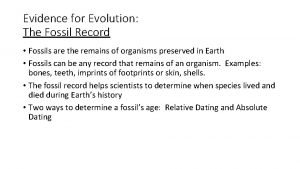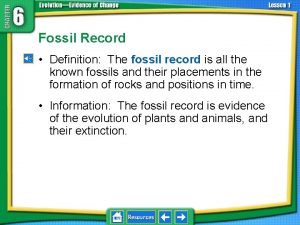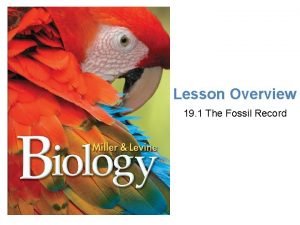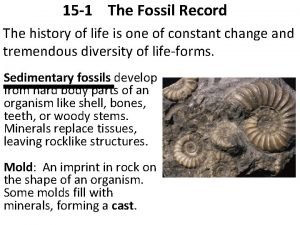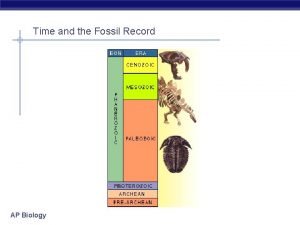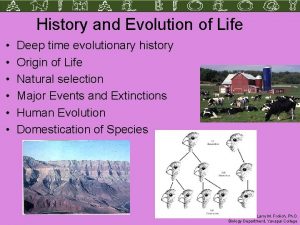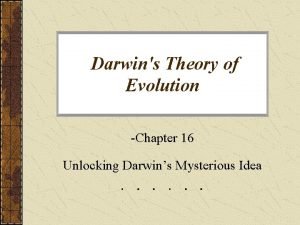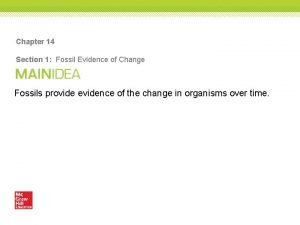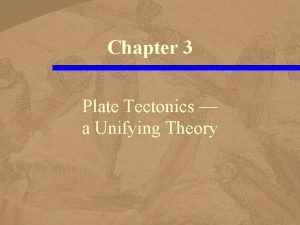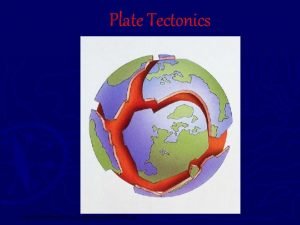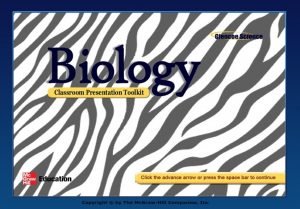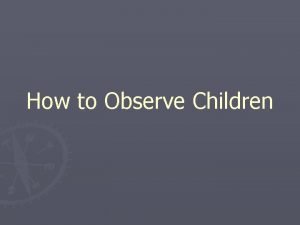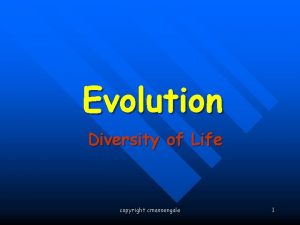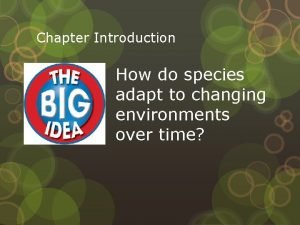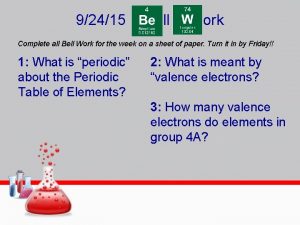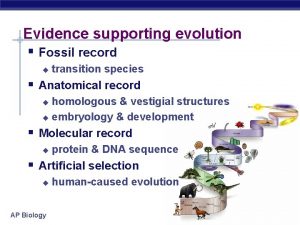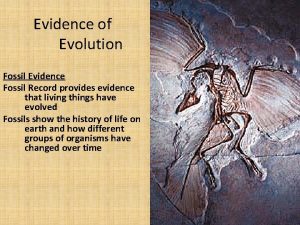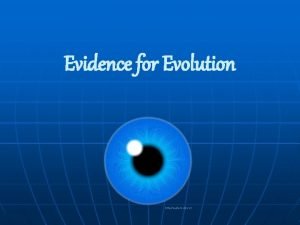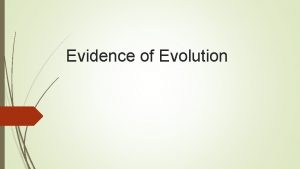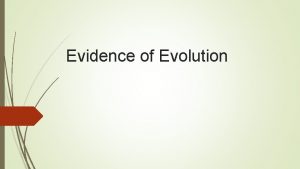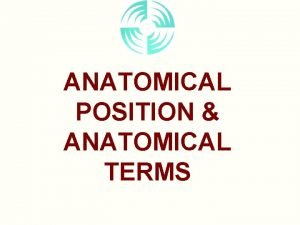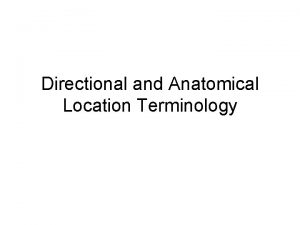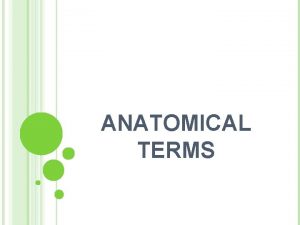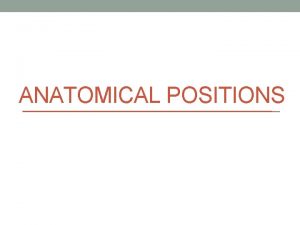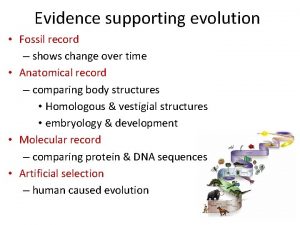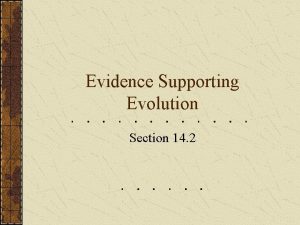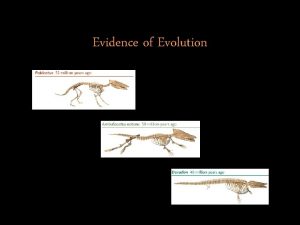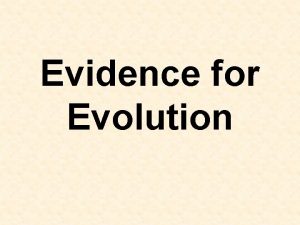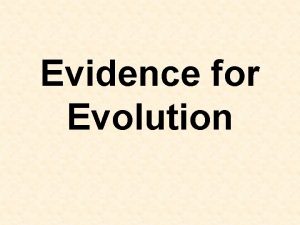Evidence supporting evolution Fossil record transition species Anatomical



















- Slides: 19

Evidence supporting evolution • Fossil record – transition species • Anatomical record – homologous & vestigial structures – embryology & development • Molecular record – protein & DNA sequence • Artificial selection – human-caused evolution

Fossil record • Layers of sedimentary rock contain fossils – new layers cover older ones, creating a record over time – fossils within layers show that a succession of organisms have populated Earth throughout a long period of time

Evolutionary change in horses 550 500 Body size (kg) 450 Equus 400 350 300 250 Merychippus 200 150 100 Mesohippus Hyracotherium 50 Nannippus 60 55 50 45 40 35 30 25 20 15 10 5 0 Millions of years ago

Evolution of birds • Archaeopteryx – lived about 150 mya – links reptiles & birds

Anatomical record • Homologous structures – similarities in characteristics resulting from common ancestry

Homologous structures • Forelimbs of human, cats, whales, & bats share same skeletal structures – similar structure – similar embryological development – different functions – evidence of common ancestor • branched off from common 4 -limbed ancestor

Analogous structures • Separate evolution of structures – similar functions – similar external form – different internal structure & development – different origin – no evolutionary relationship Don’t be fooled by their looks! Solving a similar problem with a similar solution

Convergent evolution • Flight evolved in 3 separate animal groups – evolved similar “solution” to similar “problems” – analogous structures Does this mean they have a recent common ancestor?

Convergent evolution • Fish: aquatic vertebrates • Dolphins: aquatic mammals – similar adaptations to life in the sea – not closely related Those fins & tails & sleek bodies are analogous structures!

Parallel Evolution • Parallel, but separate, evolutionary paths – filling similar ecological roles in similar environments, so similar adaptations were selected – but are not closely related

Parallel Evolution Niche Burrower Placental Mammals Mole Marsupial mole Anteater Numbat Anteater Nocturnal insectivore Australian Marsupials Mouse Climber Marsupial mouse Spotted cuscus Lemur Glider Stalking predator Chasing predator Flying squirrel Sugar glider Ocelot Tasmanian cat Wolf Tasmanian “wolf”

• Gradual Evolution: – Small changes accumulate over long periods of time until the result is a different species that could not interbreed with the original. • Punctuated Evolution: – Drastic changes occur in very short times. Explains lack of transitional fossils.

Vestigial organs • Modern animals may have structures that serve little or no function – remnants of structures that were functional in ancestral species – evidence of change over time • some snakes & whales show remains of the pelvis & leg bones of walking ancestors • eyes on blind cave fish • human tail bone This is not La. Marck’s loss from “disuse”!

Vestigial organs • Hind leg bones on whale fossils Why would whales have pelvis & leg bones if they were always sea creatures?

Comparative embryology • Similar embryological development in closely related species – all vertebrate embryos have similar structures at different stages of development • gill pouch in fish, frog, snake, birds, human, etc.

Molecular record • Comparing DNA & protein structure – universal genetic code! Why compare these genes? • DNA & RNA – compare common genes • cytochrome C (respiration) • hemoglobin (gas exchange) Human/kangaroo Closely related species have sequences that are more similar than distantly related species § DNA & proteins are a molecular record of evolutionary relationships Nucleotide substitutions 100 Dog/ cow 75 Human/ cow Rabbit/ rodent 50 Horse/ donkey Llama/ cow Sheep/ goat 25 Human/rodent Horse/cow Pig/ cow Goat/cow 0 0 25 50 75 100 Millions of years ago 125

Comparative hemoglobin structure Human Macaque Dog Bird Frog Lamprey 32 45 67 125 Why does comparing amino acid sequence measure evolutionary relationships? 8 0 10 20 30 40 50 60 70 80 90 100 110 120 Number of amino acid differences between hemoglobin (146 aa) of vertebrate species and that of humans

Artificial selection • Artificial breeding can use variations in populations to create vastly different “breeds” & “varieties” “descendants” of wild mustard “descendants” of the wolf

Natural selection in action • Insecticide & drug resistance – insecticide didn’t kill all individuals – resistant survivors reproduce – resistance is inherited – insecticide becomes less & less effective
 Examples of fossil evidence
Examples of fossil evidence 17-1 the fossil record
17-1 the fossil record Convergent evolution defintion
Convergent evolution defintion What is the “fossil record”?
What is the “fossil record”? Section 15-1 review the fossil record
Section 15-1 review the fossil record Skeletal system
Skeletal system Fossil record
Fossil record Darwin viewed the fossil record as
Darwin viewed the fossil record as Chapter 14 study guide section 1 fossil evidence of change
Chapter 14 study guide section 1 fossil evidence of change Fossil and mountain chain evidence
Fossil and mountain chain evidence Pangea fossil evidence
Pangea fossil evidence Pangea fossil evidence
Pangea fossil evidence The history of life section 1 fossil evidence of change
The history of life section 1 fossil evidence of change Keystone species definition biology
Keystone species definition biology Specimen record observation
Specimen record observation Copyright
Copyright Evolution of species 2
Evolution of species 2 Evidence supporting efficient market hypothesis
Evidence supporting efficient market hypothesis Evidence supporting mendeleevs table
Evidence supporting mendeleevs table Supporting evidence
Supporting evidence
